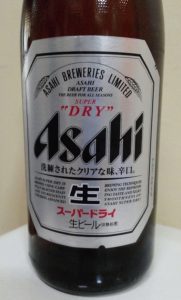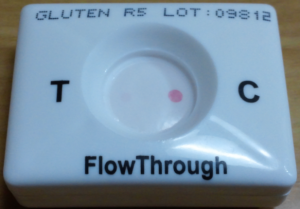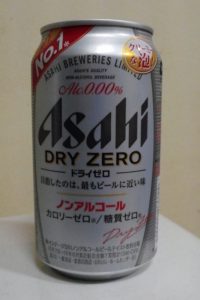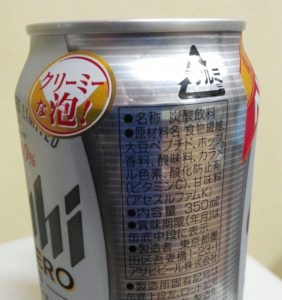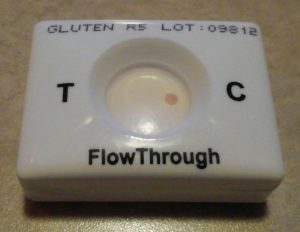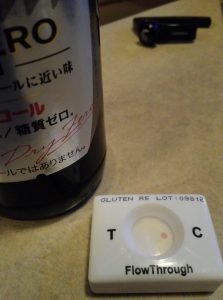Asahi Super Dry is Japan’s top-selling beer domestically (and probably internationally, too). It is everywhere in Japan. It’s not my beer of choice, but I tested it because I thought it had the best chance of any of the Japanese macrobrews to have a low gluten content, since its ingredients include rice and corn.
Beer: Asahi Super Dry (アサヒスーパードライ)
Producer: Asahi
Originating country: Japan
Brewing location: Japan
Bottle size: 500ml
Alcohol by volume: 5.0%
Ingredients: (translated from the bottle): barley, hops, rice, corn, starch (not sure what kind — it just says “starch”)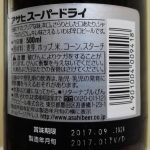
Miscellaneous: In December 2015, Steffen posted test results for an Asahi Super Dry that was brewed in the UK (and labeled “Product of CZ”). The following test is for a bottle of Asahi Super Dry that was purchased and tested in Japan.
Test kit: Imutest Gluten-in-Food Kit
Test result: There is a faint, but visible, pink spot on the left side of the testing area, which is an indication of the presence of gluten. The pink spot on the right test area (C) is a control spot and indicates that the extract/sample is suitable, the test has been performed correctly, and all reagents are active.
Note: Out of curiosity, I sent these photos to Imutest, asking if they could estimate the gluten content. They first pointed out that the test isn’t designed to be quantitative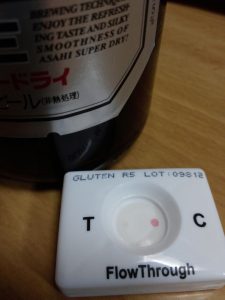 , but then estimated that “your photo would suggest a value slightly below 10ppm if it was a regular food sample, which means that it is probably less than 1ppm for beer provided you used the recommended protocol of eliminating the extraction step and adding the beer directly…”
, but then estimated that “your photo would suggest a value slightly below 10ppm if it was a regular food sample, which means that it is probably less than 1ppm for beer provided you used the recommended protocol of eliminating the extraction step and adding the beer directly…”
Imutest has been quite helpful, and I’ve ordered five more testing kits.

